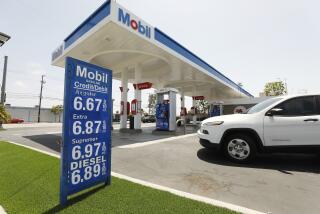U.S. Will Slow Oil Emergency Reserve Fill-Up
WASHINGTON — The Administration plans to slow the filling of the Strategic Petroleum Reserve and to sell government-owned oil fields, an Energy Department official said Tuesday.
Assistant Energy Secretary Allen Wampler, testifying at House budget hearings, said the Administration wants to cut the filling rate for the emergency reserve from the current 75,000 barrels a day to 35,000.
He said, however, that the Administration is still committed to filling the reserve to its planned capacity of 750 million barrels.
“The proposed fill rate will enable the department to continue building protection against foreign supply disruptions and is consistent with the Administration’s support for a 750-million barrel reserve,” Wampler told a House appropriations subcommittee.
Elk Hills Targeted
The reserve held nearly 517 million barrels of crude oil at the end of February and is expected to reach 534 million barrels, equal to about three months of imports, by October, he said.
Wampler said the Administration also wants to sell the producing Elk Hills and Teapot Dome Naval Petroleum Reserves in California and Wyoming respectively to private industry.
“We respect the fact that these sales can go forward only under conditions approved by the Congress,” he said.
A Stanford University engineering professor, John Weyant, said at another House hearing Monday that most independent studies of the strategic reserve have concluded that at least a billion barrels would be “a wise investment.”
“Given the lower oil prices that emerged in 1986, I would not be surprised if up to 2 billion barrels might now make economic sense,” Weyant said at a hearing on Herrington’s energy security report.
More to Read
Get the L.A. Times Politics newsletter
Deeply reported insights into legislation, politics and policy from Sacramento, Washington and beyond. In your inbox three times per week.
You may occasionally receive promotional content from the Los Angeles Times.










